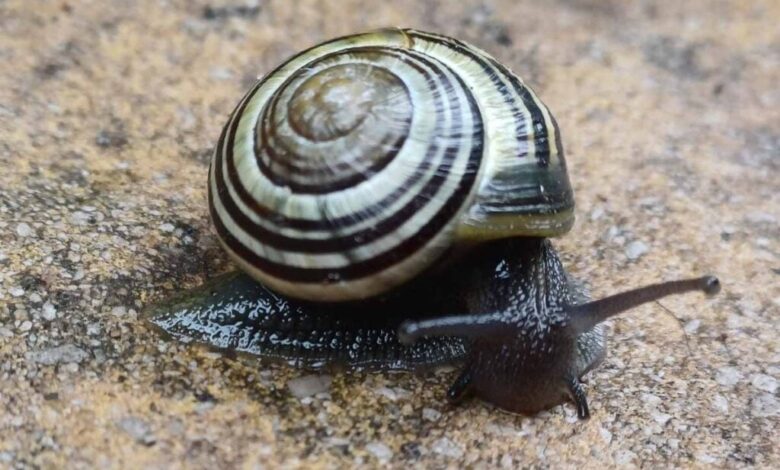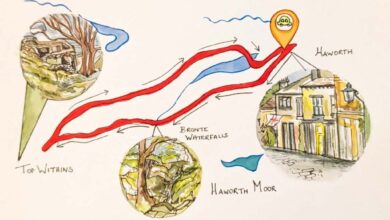Facts and Interesting Features of UK Garden Snails

Have you ever been curious about the life of garden snails? These unassuming little creatures live in the gardens and hedgerows leaving a slimy trail behind them as they glide through life with their home on their back.
In the serene, misty mornings of the UK, garden snails embark on their slow, deliberate journeys across dewy leaves and damp soil to return to their hiding places out of sight and harm, they are mostly nocturnal and find places to retreat to during the day, unless it’s rainy and overcast.
The seemingly humble snails, often overlooked or dismissed as mere pests, possess a fascinating world of their own. From their intricate spiralled shells to their surprising survival strategies, garden snails are a marvel of nature’s design.
Join me in as I delve into the captivating lives of these molluscs, exploring their habits, habitats, and the unique roles they play in our gardens. Whether you are a seasoned gardener, a curious naturalist or someone looking to appreciate the smaller wonders of the world, there is much to discover about these slow-moving yet endlessly intriguing inhabitants of the British garden.

How do snails benefit the garden?
Garden snails, often seen as pests, can bring several benefits to your garden:
Decomposition: Snails feed on decaying plant matter, contributing to the decomposition process and the recycling of nutrients back into the soil, which benefits plant growth.
Indicator Species: The presence of snails can indicate a healthy, moist environment, as they thrive in areas with sufficient organic matter and humidity.
Biodiversity: Snails are part of the garden’s biodiversity. A diverse ecosystem is generally more resilient and capable of withstanding various environmental stresses.
Food source for wildlife: Having snails in the garden bring a useful source of food for various wildlife, including birds, frogs, and hedgehogs, contributing to the garden’s ecological balance.
By understanding and appreciating these benefits, gardeners can take a more holistic approach to managing their gardens, fostering a healthier and more vibrant ecosystem.
Nocturnal
Being primarily nocturnal, garden snails can move about in conditions less likely to dry out. Rainy and overcast days are also ideal times for snails to move around without drying out. Luckily for snails living in the UK we have plentiful overcast and rainy days for them to move around and thrive.

Sensory Tentacles
What are snail tentacles used for? The shorter set of tentacles are used for feeling their way about and to smell with.
The longer set located on top of their heads have eyes at the tips to see where they are going, and these can be retracted inside at the first sign of danger.
Typical Lifespan and Growth
Have you ever wondered about the lifespan of the common garden snail? In the UK garden snails can usually live for roughly two to five years if given the opportunity and lucky enough to avoid predators such as birds, frogs, toads, small mammals like hedgehogs and badgers, or human interaction, but in captivity have been known to live for up to ten years.
The shells of garden snails grow in a spiral shape that expands as the snail ages and grows. The number of spirals helps to estimate the age of the snail.

Getting around
Snails get around using a muscular foot that secretes mucus, thus allowing them to glide along whilst also helping to protect them from injury from rough surfaces.
The mucus protects the snail from moisture loss too and is used to adhere them to surfaces, it is a snail superpower!
During the day they can hide from warmer temperatures and predators by sealing up their shells using mucus which makes them less vulnerable.

Hibernation
During frosty winter months garden snails can go into a hibernation. Once they have found a secure spot out of the way, under pots or under bushes, they will seal their shell up using a thick layer of the mucus to make a barrier and go into a state of hibernation, they will stay this way until the weather changes.

Reproduction
Have you ever wondered about the reproductive life of a snail? Interestingly, they mature enough to reproduce at between the ages of 6 months to 2 years and it depends on the environmental conditions they live in.
If there’s plentiful food sources, plants, leaves, flowers or decaying matter and places to hide during the warmth of the day, the healthy snail might be mature by 6 months.
They are hermaphrodites, meaning that they have male and female reproductive organs, so they can mate with any other snail, and both will lay eggs.

Speedy snail?
Garden snails are by no means fast creatures, but did you know that they travel at a general speed of about 0.048km/h which translates to 0.03 miles an hour!
The animated film “Turbo” (2013) gave the unassuming garden snail a more interesting character in the protagonist of the movie, Turbo the snail. This garden snail dreamed of becoming the fasted snail in the world and ends up racing in the Indianapolis 500.

Famous Snails
Apart from Turbo the snail in the 2013 film of the same name, here are a few other famous or well-loved snails.
There’s Gary the snail in the animated children’s television series “SpongeBob SquarePants.” In the series, Gary is SpongeBob’s pet sea snail, known for his meowing communication style and loveable personality.
A real-life garden snail named Jeremy the Left Coiled Snail became famous when scientist, Professor Angus Davison from the Nottingham School of Life Sciences launched a global search for another left coiled snail for breeding purposes in 2016. Jeremy had a genetic mutation causing its shell to coil to the left instead of the right. The campaign eventually managed to find a mate, and delivered some right coiling offspring, before it died in 2017. Jeremy was a grove snail (Cepaea Nemoralis) one of the UK’s colourful common snails.
Sami the Snail is another real-life snail who gained some attention in 2014 for being part of a study about snail homing instincts. Sami was released in a public experiment and successfully returned home, highlighting the navigational abilities of snails.
Garden snails have been known to travel distances of about 100 feet (30 metres) to return home. They possess a strong homing instinct.
Lastly there’s Eleanor the giant African Land Snail who became a media sensation in the UK when discovered in a London garden in 2012, raising awareness about invasive species.

Snail deterrents
For those of us trying to cultivate flowers or vegetables in the garden and are inundated with hungry snails, here are some natural ways to deter them from devouring every plant in sight.
I have found that a sprinkling of rolled oats around each of my vegetable plants works well. I don’t know the reason behind this, but it has rescued our pumpkin and squash plants so far this year. Just buy the cheapest store brand oats for this and regularly put some around each plant.
I hear that salt is a deterrent and that some people use it mixed with Vaseline and smear it around the plant pots, this way it avoids using it on the soil and will not cause harm to plants or soil.
Copper barriers work by reacting with the snail slime and causing a mild electrical shock, this deters them from returning to the area. Copper tape or mesh are the usual methods for this.
Eggshells crushed and scattered around plants creates a sharp, uncomfortable surface for snails to cross which they will avoid and go elsewhere. We use this method to deter the snails going near our plants sometimes and it does seem to be helpful.
Coffee grounds spread around the base of plants is another snail deterrent due to its course texture and toxic nature to the snail.

Conclusion
UK garden snails, while often seen as pests, play a fascinating role in the ecosystem of our gardens. These resilient little creatures, with their slow and steady pace, teach us a few things about persistence and adaptation.
Understanding their lifecycle, diet and behaviour will surely help us to manage our garden better and hopefully generate a greater appreciation for these humble molluscs. Whether you want to implement natural deterrents or would like to observe their habits and behaviours, garden snails offer a quite unique glimpse of a mini beast world in our own back gardens.
By knowing more about snails, we can be better at balancing our control methods with ecological awareness, we can coexist with these intriguing invertebrates and maintain the health and beauty of our green spaces, while not eradicating a vital food source for other wildlife around us.
I hope you have learnt a few snail facts from my snail post, and maybe found a little fondness in your heart for these little ones. Why not keep a look out for any left spiralled snails too. Just don’t tell me that you eat them!
Source link



